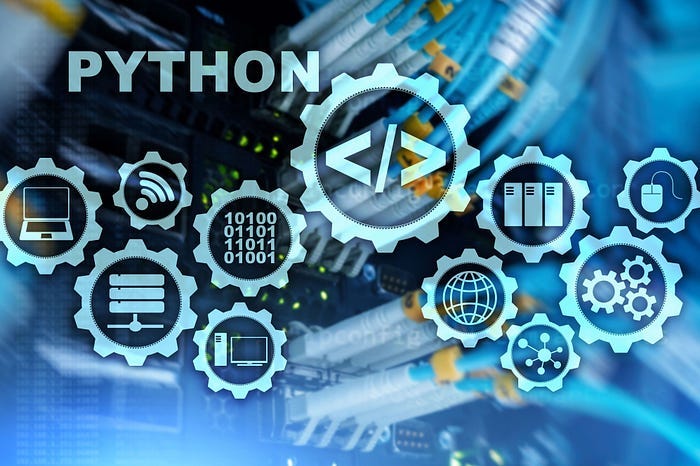Python Crash Course | Python Strings for Beginners: A Comprehensive Guide with Examples

Python strings are an essential part of the Python programming language, and they allow you to work with text data. In this comprehensive guide for beginners, we’ll explore what Python strings are, how to create, manipulate, and format them, and provide easy-to-understand examples along the way.
What are Python Strings?
Strings are sequences of characters, including letters, digits, symbols, and whitespace characters. In Python, you can create strings by enclosing a sequence of characters between single quotes (‘ ‘) or double quotes (” “).
Example:
string1 = 'Hello, World!'
string2 = "Python is fun!"
print(string1)
print(string2)
String Concatenation
You can combine strings using the “+” operator, which is called string concatenation.
Example:
string1 = 'Hello, '
string2 = 'World!'
result = string1 + string2
print(result) # Output: Hello, World!
String Indexing
Each character in a Python string has an index, starting from 0 for the first character. You can access individual characters in a string using their indices.
Example:
my_string = 'Python'
first_char = my_string[0]
print(first_char) # Output: P
String Slicing
You can extract a substring from a string by specifying the start and end indices using the slice notation [start:end].
Example:
my_string = 'Python is awesome'
substring = my_string[0:6]
print(substring) # Output: Python
String Length
You can find the length of a string using the built-in len() function.
Example:
my_string = 'Python is awesome'
length = len(my_string)
print(length) # Output: 17
String Methods
Python provides a variety of built-in methods to manipulate strings. Some common methods include:
lower(): Converts all characters to lowercase.upper(): Converts all characters to uppercase.strip(): Removes leading and trailing whitespace.split(): Splits the string into a list based on a specified delimiter.join(): Joins the elements of a list into a single string using a specified delimiter.
Example:
text = ' Python Strings Tutorial '
lower_text = text.lower()
upper_text = text.upper()
stripped_text = text.strip()
words = stripped_text.split()
joined_words = '-'.join(words)
print(lower_text) # Output: ' python strings tutorial '
print(upper_text) # Output: ' PYTHON STRINGS TUTORIAL '
print(stripped_text) # Output: 'Python Strings Tutorial'
print(words) # Output: ['Python', 'Strings', 'Tutorial']
print(joined_words) # Output: 'Python-Strings-Tutorial'
String Formatting
You can insert variables into a string using different methods to create formatted strings. In this section, we’ll explore the format() method and f-strings (available in Python 3.6+).
Example 1: Using the format() method
name = 'Alice'
age = 30
formatted_string = 'My name is {} and I am {} years old.'.format(name, age)
print(formatted_string) # Output: 'My name is Alice and I am 30 years old.'
In this example, we use the format() method to insert the values of the variables name and age into the string. The curly braces {} serve as placeholders for the variables, which will be replaced by their values in the order they appear within the format() method.
Example 2: Using f-strings
name = 'Bob'
age = 25
formatted_string = f'My name is {name} and I am {age} years old.'
print(formatted_string) # Output: 'My name is Bob and I am 25 years old.'
F-strings, also known as formatted string literals, were introduced in Python 3.6. They provide a more concise and readable way to format strings. To create an f-string, you prefix the string with the letter ‘f’ or ‘F’ and enclose the variable names directly within the curly braces {} in the string. This allows you to embed expressions inside the string literals, which will be evaluated at runtime and replaced by their values.
Both the format() method and f-strings can help you create clean, readable strings that include variable values or expressions.
Summary:
In this comprehensive guide for beginners, we covered the basics of Python strings, including:
- What are Python Strings?
- String Concatenation
- String Indexing
- String Slicing
- String Length
- String Methods
- String Formatting
By understanding these fundamental concepts, you’ll be well-equipped to work with text data in your Python programs. As you continue your Python journey, you’ll encounter more advanced string techniques and methods that can further enhance your string manipulation capabilities.
Here’s a recap of the examples we used in this tutorial:
# 1. Creating strings
string1 = 'Hello, World!'
string2 = "Python is fun!"
# 2. String concatenation
result = string1 + string2
# 3. String indexing
first_char = string1[0]
# 4. String slicing
substring = string1[0:5]
# 5. String length
length = len(string1)
# 6. String methods
text = ' Python Strings Tutorial '
lower_text = text.lower()
upper_text = text.upper()
stripped_text = text.strip()
words = stripped_text.split()
joined_words = '-'.join(words)
# 7. String formatting (using format() method)
name = 'Alice'
age = 30
formatted_string1 = 'My name is {} and I am {} years old.'.format(name, age)
# 7. String formatting (using f-strings)
formatted_string2 = f'My name is {name} and I am {age} years old.'
With this foundation, you can confidently work with Python strings and continue to explore more advanced features and techniques as you progress in your programming journey.
Latest end-to-end Learn by Coding Projects (Jupyter Notebooks) in Python and R:
All Notebooks in One Bundle: Data Science Recipes and Examples in Python & R.
End-to-End Python Machine Learning Recipes & Examples.
End-to-End R Machine Learning Recipes & Examples.
Applied Statistics with R for Beginners and Business Professionals
Data Science and Machine Learning Projects in Python: Tabular Data Analytics
Data Science and Machine Learning Projects in R: Tabular Data Analytics
Python Machine Learning & Data Science Recipes: Learn by Coding
R Machine Learning & Data Science Recipes: Learn by Coding
Comparing Different Machine Learning Algorithms in Python for Classification (FREE)
There are 2000+ End-to-End Python & R Notebooks are available to build Professional Portfolio as a Data Scientist and/or Machine Learning Specialist. All Notebooks are only $29.95. We would like to request you to have a look at the website for FREE the end-to-end notebooks, and then decide whether you would like to purchase or not.